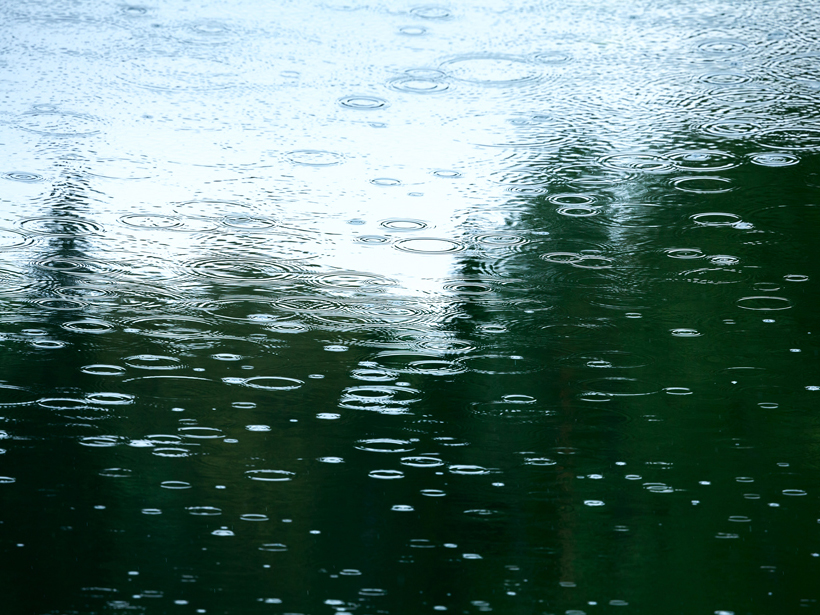During what started out as a routine study of toxic elements in North American rain, Peter Weiss-Penzias and colleagues have discovered increasing concentrations of the toxic element mercury in rain collected across a vast region of the United States from the Great Plains to the West Coast.
A new study published in Science of the Total Environment by the researchers details the surprising increase in mercury concentrations. The nation averages about 10 nanograms of mercury per liter of rain, but the recent measurements revealed increases greater than 2% per year in the central and western regions of the country. Meanwhile, the amounts of mercury that clouds spit onto the eastern region are generally decreasing because of stricter emission regulations and mercury scrubbers cleaning pollutants from smokestacks, said Weiss-Penzias, an environmental toxicologist at the University of California, Santa Cruz.
Bucking the Trend
Nationally, “there used to be a decrease in mercury, which is what the literature has been saying, but now we’re seeing a flattening or reversal of that trend,” said Daniel Jacob, an atmospheric chemistry scientist at Harvard University in Cambridge, Mass., who was not involved in the study. Because of the past decreasing trends of mercury, he explained that this result is somewhat surprising. He added, “Picking up an increase in wet deposition is definitely new.”
Mercury acts as a neurotoxin in humans and other organisms. The metal occurs naturally and as a by-product of human activities, such as coal burning and gold mining.
During 2007–2013, when up to 81 locations provided data, a third of the sites had significantly positive trends.
Weiss-Penzias and his colleagues used samples from the National Atmospheric Deposition Program, a consortium of rain monitoring sites that started out in the 1970s monitoring acid rain but instituted the Mercury Deposition Network in 1997. The network began with 19 sites but has grown more than fourfold, making it possible to readily trace both long-term and short-term trends, Weiss-Penzias said.
During 2007–2013, when up to 81 locations provided data, “a third of the sites had significantly positive trends,” he said, noting that “most of those are clustered in the center and west of the U.S.”
Mercury Emissions from Asia Are the Likely Source
Given strict U.S. emissions regulations, the added mercury most likely didn’t come from domestic emissions, Weiss-Penzias explained. As expected, East Coast stations have shown a decrease in mercury concentrations in line with the emissions trajectory for the nation for the previous 17 years. Weiss-Penzias said he suspects that the added mercury in the central and western regions of the United States drifted through the upper atmosphere from Asia where mercury emissions have been rising from coal burning and other sources.
“If it’s released in China, it could easily travel to the U.S.; it has a residence time of about half a year [in the atmosphere]. It’s really a global pollutant,” said Charles Driscoll, a professor of environmental systems at Syracuse University in Syracuse, N.Y., who was not involved in the study.
Moreover, said Weiss-Penzias, “the spatial patterns of the sites that showed increases were consistent with this long-range transport” because moist air moving into the U.S. West from the Pacific Ocean tends to deposit its rainfall just before, on, and just past inland mountain ranges where the sites with the greatest mercury increases were located.
Mercury Is Delivered by More Than Just Rain
Wet deposition of mercury might tell only part of the story.
This wet deposition of mercury might tell only part of the story, said Driscoll, because the amount of mercury that is dry deposited from dust or gases surpasses the amount that falls in rain. Thus, he added, without further investigation it’s hard to tell what the implications of this increase in mercury really are or will be.
—Cody Sullivan, Writer Intern
Citation: Sullivan, C. (2016), Mercury in rain increasing in western and central United States, Eos, 97, doi:10.1029/2016EO045331. Published on 2 February 2016.
Text © 2016. The authors. CC BY-NC 3.0
Except where otherwise noted, images are subject to copyright. Any reuse without express permission from the copyright owner is prohibited.

